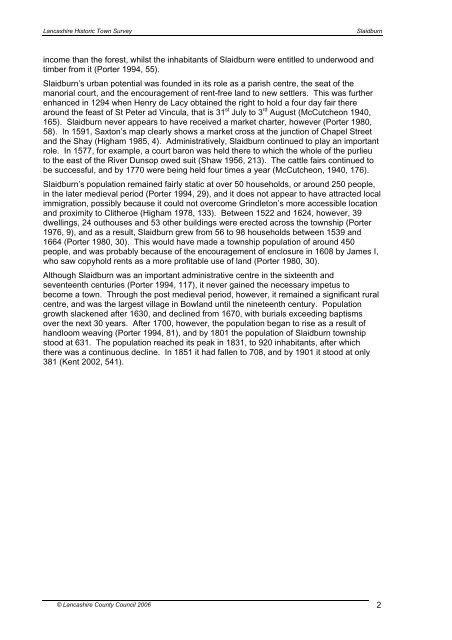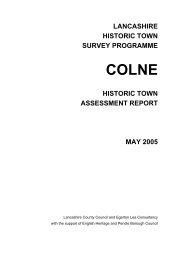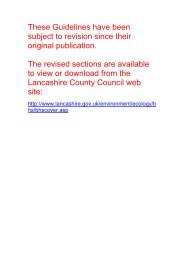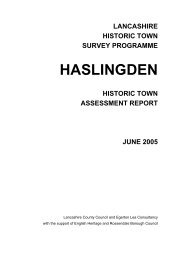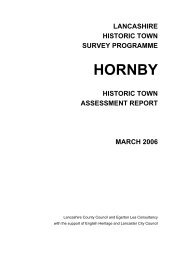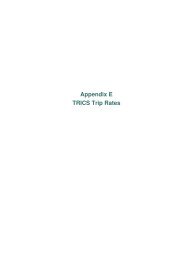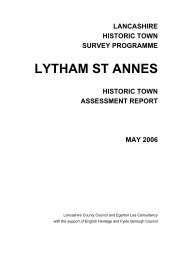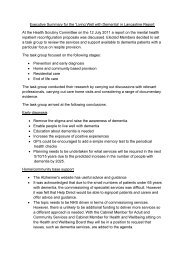SLAIDBURN - Lancashire County Council
SLAIDBURN - Lancashire County Council
SLAIDBURN - Lancashire County Council
Create successful ePaper yourself
Turn your PDF publications into a flip-book with our unique Google optimized e-Paper software.
<strong>Lancashire</strong> Historic Town SurveySlaidburnincome than the forest, whilst the inhabitants of Slaidburn were entitled to underwood andtimber from it (Porter 1994, 55).Slaidburn’s urban potential was founded in its role as a parish centre, the seat of themanorial court, and the encouragement of rent-free land to new settlers. This was furtherenhanced in 1294 when Henry de Lacy obtained the right to hold a four day fair therearound the feast of St Peter ad Vincula, that is 31 st July to 3 rd August (McCutcheon 1940,165). Slaidburn never appears to have received a market charter, however (Porter 1980,58). In 1591, Saxton’s map clearly shows a market cross at the junction of Chapel Streetand the Shay (Higham 1985, 4). Administratively, Slaidburn continued to play an importantrole. In 1577, for example, a court baron was held there to which the whole of the purlieuto the east of the River Dunsop owed suit (Shaw 1956, 213). The cattle fairs continued tobe successful, and by 1770 were being held four times a year (McCutcheon, 1940, 176).Slaidburn’s population remained fairly static at over 50 households, or around 250 people,in the later medieval period (Porter 1994, 29), and it does not appear to have attracted localimmigration, possibly because it could not overcome Grindleton’s more accessible locationand proximity to Clitheroe (Higham 1978, 133). Between 1522 and 1624, however, 39dwellings, 24 outhouses and 53 other buildings were erected across the township (Porter1976, 9), and as a result, Slaidburn grew from 56 to 98 households between 1539 and1664 (Porter 1980, 30). This would have made a township population of around 450people, and was probably because of the encouragement of enclosure in 1608 by James I,who saw copyhold rents as a more profitable use of land (Porter 1980, 30).Although Slaidburn was an important administrative centre in the sixteenth andseventeenth centuries (Porter 1994, 117), it never gained the necessary impetus tobecome a town. Through the post medieval period, however, it remained a significant ruralcentre, and was the largest village in Bowland until the nineteenth century. Populationgrowth slackened after 1630, and declined from 1670, with burials exceeding baptismsover the next 30 years. After 1700, however, the population began to rise as a result ofhandloom weaving (Porter 1994, 81), and by 1801 the population of Slaidburn townshipstood at 631. The population reached its peak in 1831, to 920 inhabitants, after whichthere was a continuous decline. In 1851 it had fallen to 708, and by 1901 it stood at only381 (Kent 2002, 541).© <strong>Lancashire</strong> <strong>County</strong> <strong>Council</strong> 2006 2


